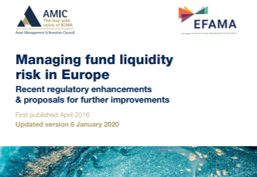At the international level the FSB, together with IOSCO, are responsible for implementing policies that address structural vulnerabilities arising from asset management activities. Several regulatory actions have been taken to ensure the resilience of the asset management sector since the global financial crisis. The EU’s current risk management regime has recently been put to the test by the Covid-19-led market stress, proving its overall resilience.
Future regulation should be targeted, risk-based and reflect the differing risk profiles of Non-Bank Financial Institutions (NBFI) entities and activities. EFAMA and its members are committed to working closely with international and European regulators on the ongoing improvement of investment funds’ existing risk management framework, and to foster the development of best practices within the investment management industry.


































